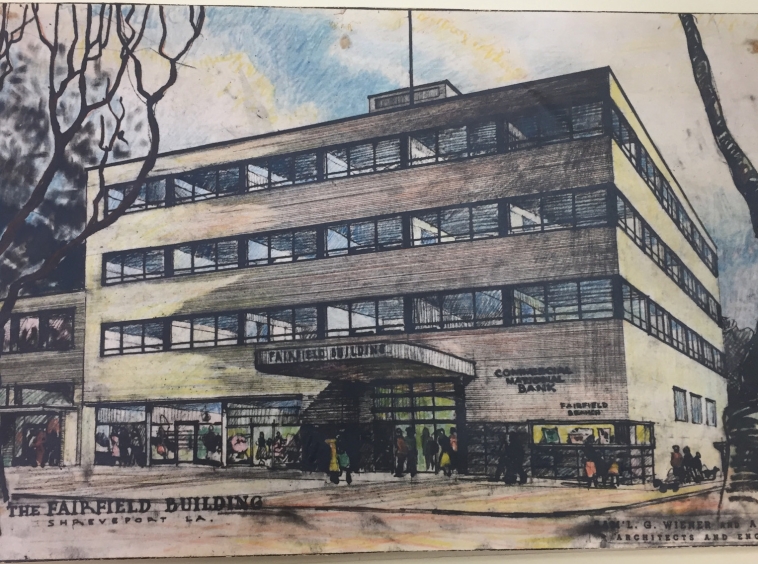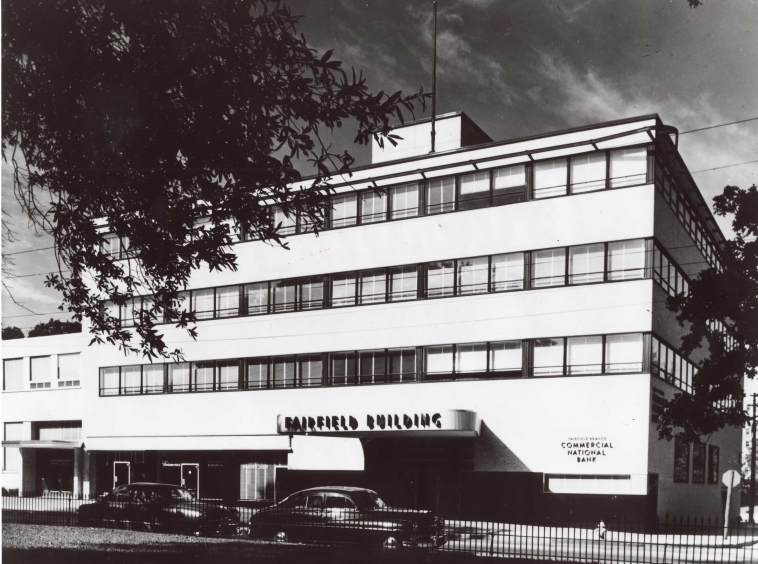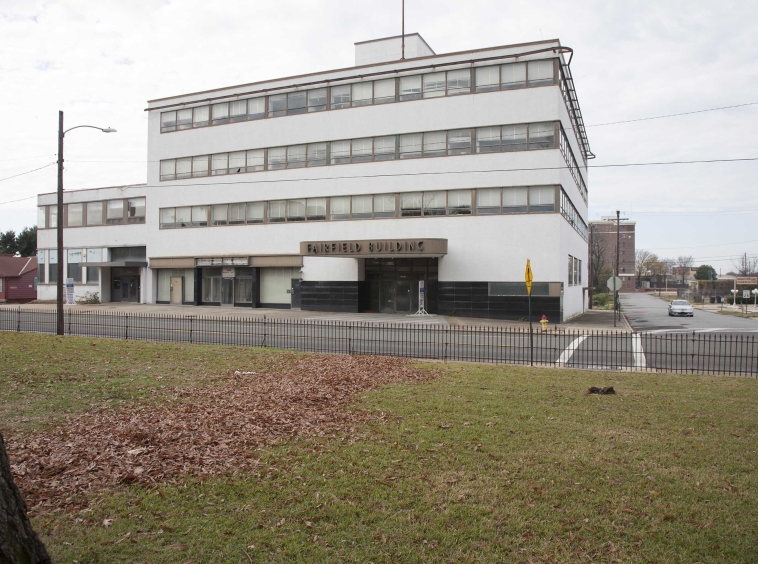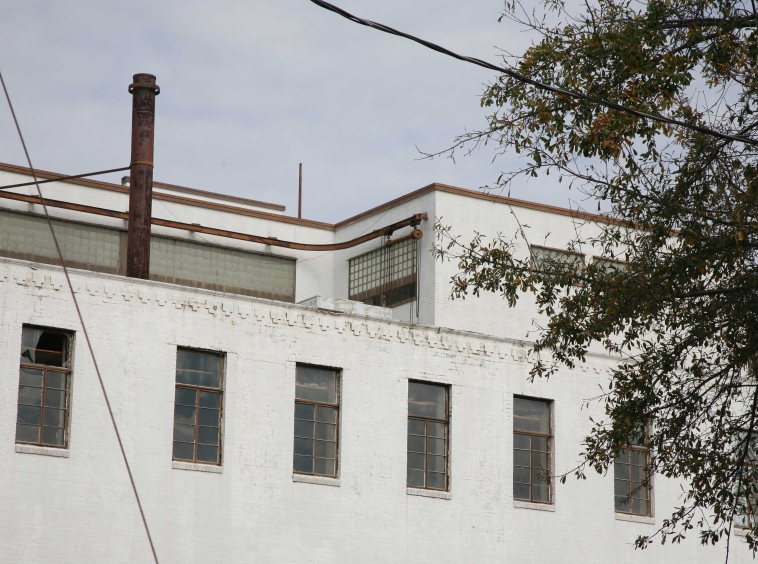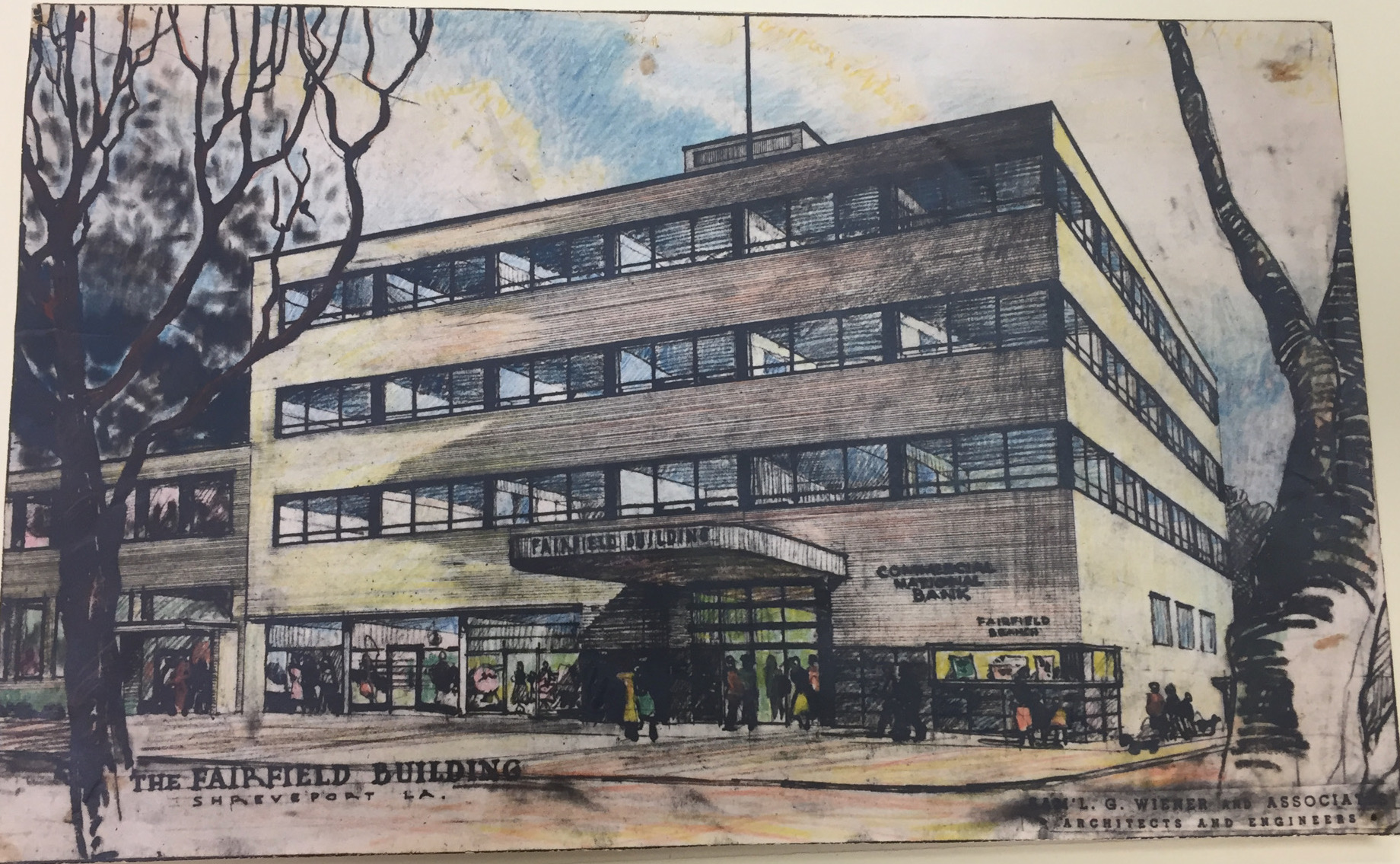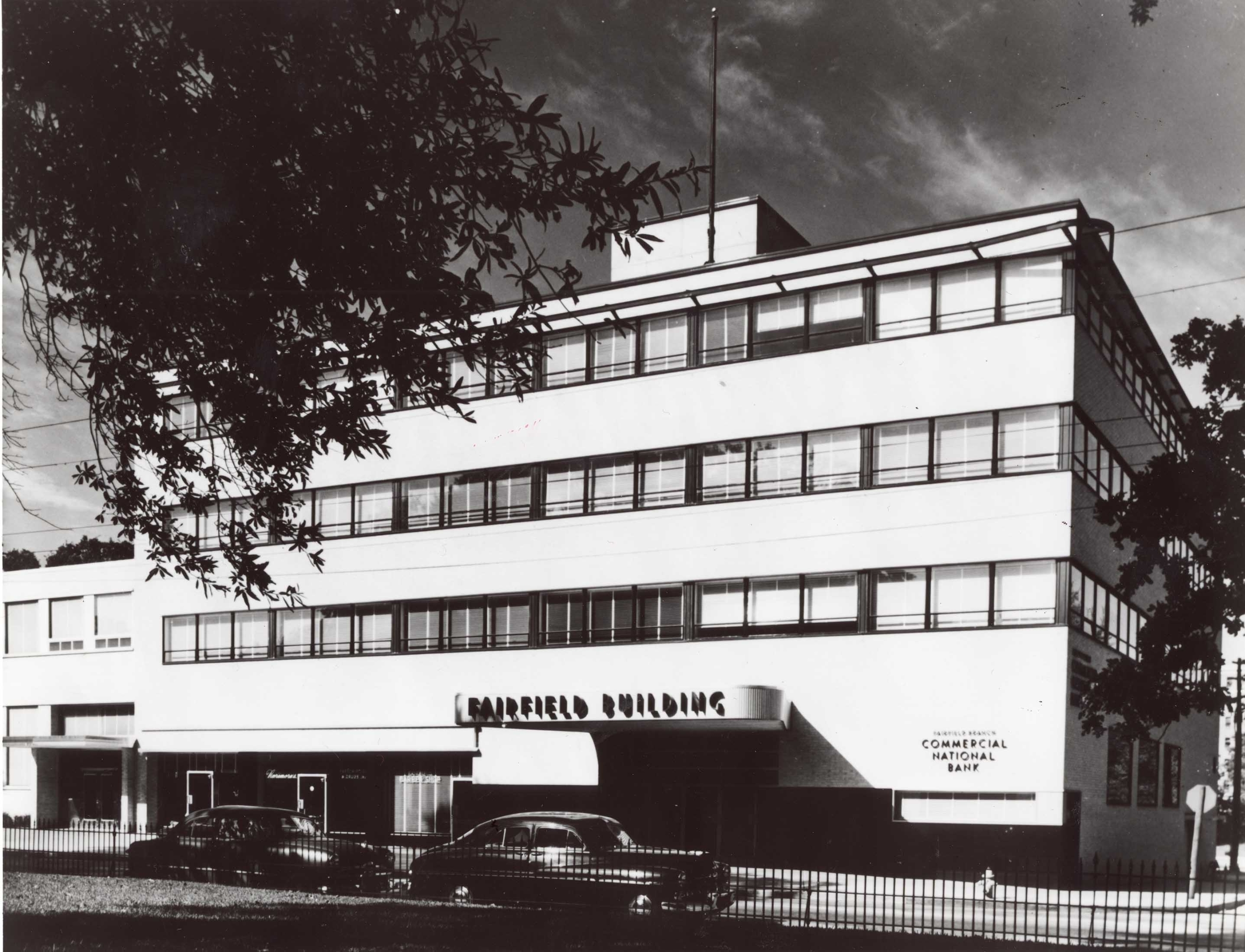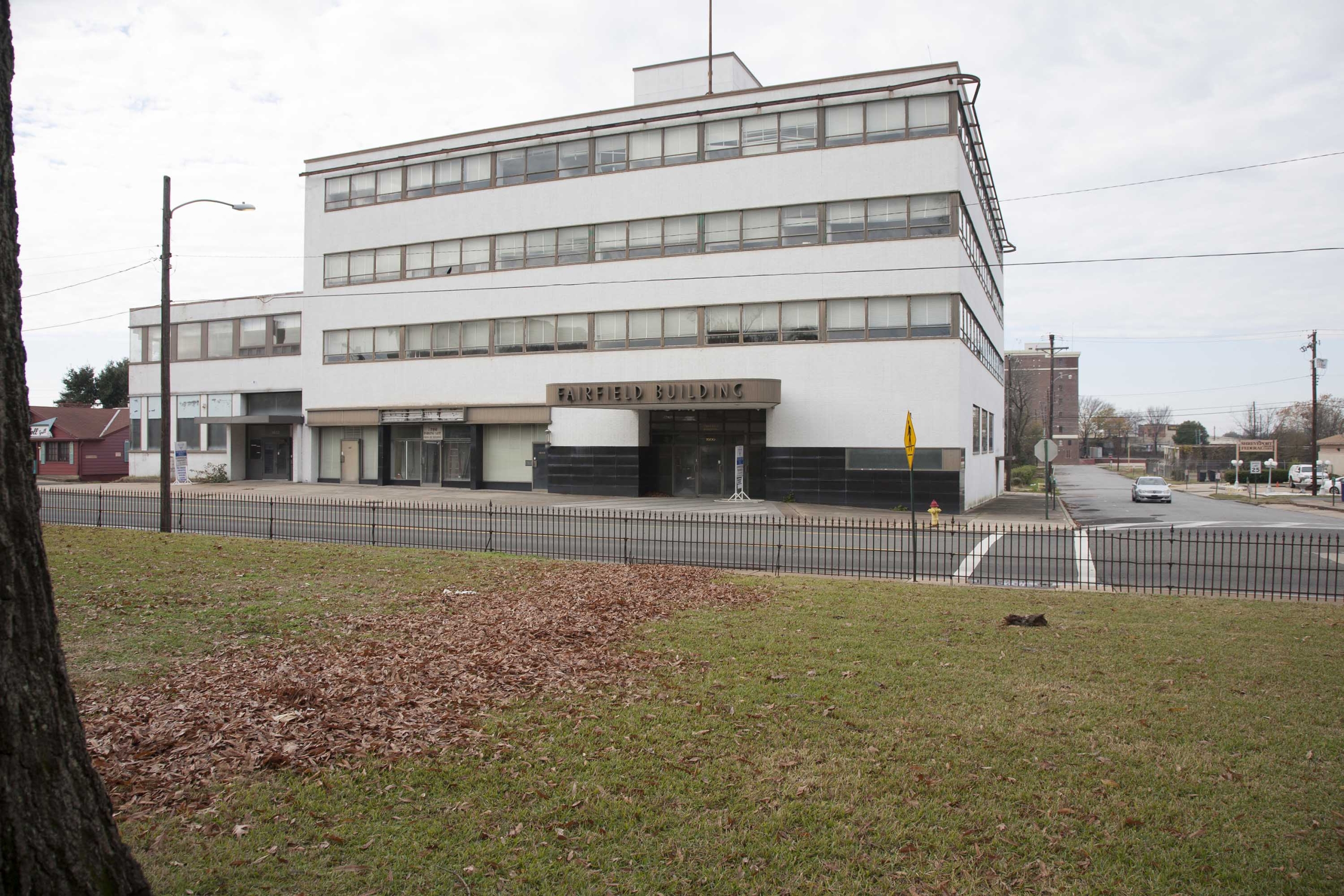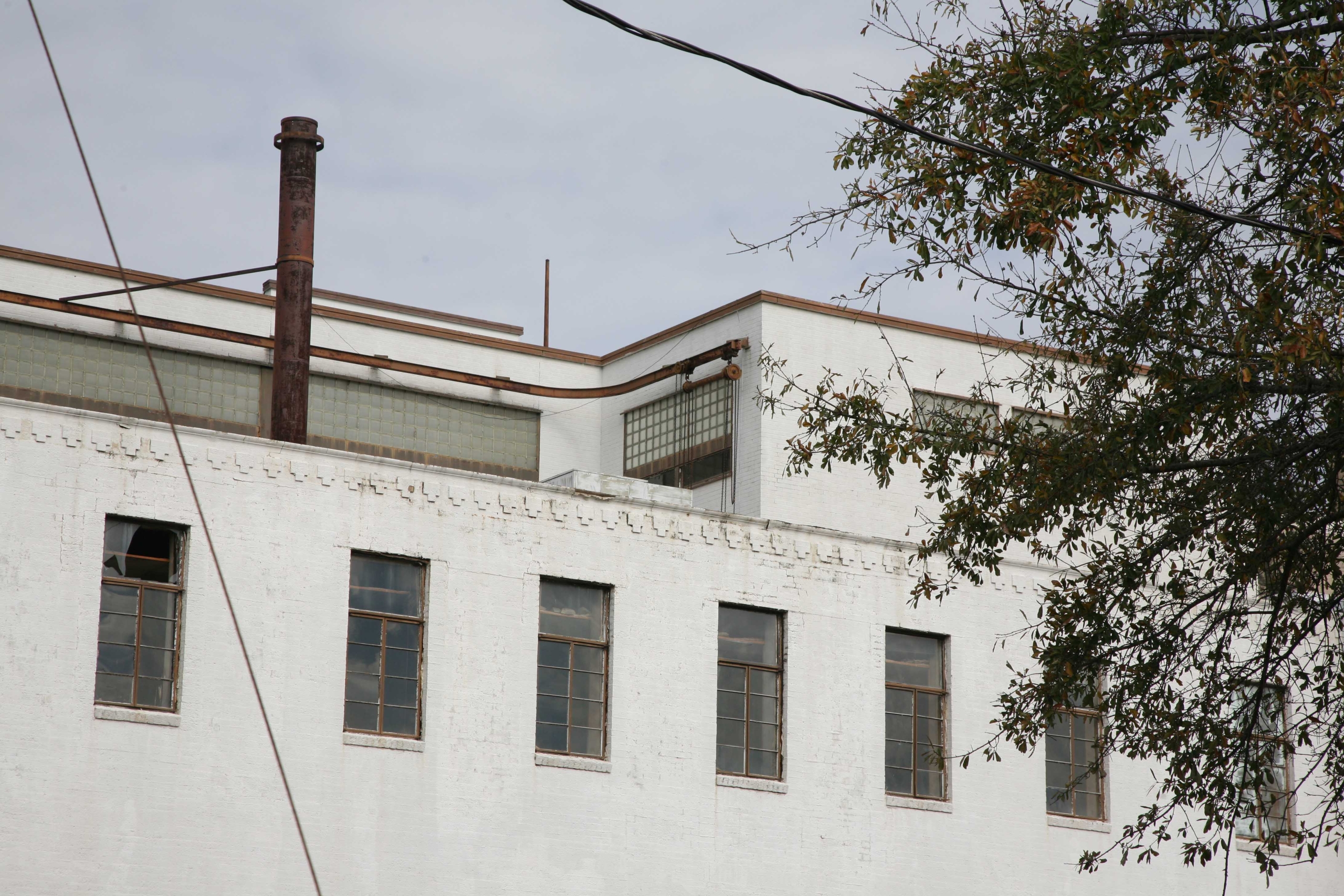Description
- Designed by: Samuel G. Wiener Sr.
- Design year: 1948.
The Fairfield Building was developed by Commercial National Bank (CNB) to house a branch bank location on the first floor and speculative lease space on the upper three floors. Samuel G. Wiener Sr. was selected as the architect for the project following his involvement on the main CNB location in the central business district. The Wiener name was closely associated with CNB because Sam Wiener Jr. was a director until he died in 1942. The two-story brick portions to the south and west of the four-story section, also designed by Samuel G. Wiener Sr., predates the Fairfield Building.
Even though both Wiener brothers used a variety of strip (ribbon) window design approaches on different projects during the 1930’s, none sleekly turns the corner like the 1948 Fairfield Building. The Fairfield Building has alternating bands of buff-colored Flemish bond striated brick (now painted white) and fixed steel sashes over 16” tall operative steel hopper sashes for ventilation.
Wiener included two curvilinear elements in stark contrast to the orthogonal geometry of the building—the entrance canopy and the track to support the window washing cart. Typically, the structure to support window washing equipment was cantilevered from roof-mounted davits that were not visible from the street. In this case, Wiener elected to celebrate the track and its curvilinear shape at the corners by making them visible as part of the architecture.
What's Nearby?
- Arts & Entertainment
-
Mollie Corbett Photography (0.06 mi)
-
Paper Crane Tattoos And Art (0.13 mi)
-
Bear's (0.13 mi)
- Local Flavor
-
Local Flavor (64.01 mi)
- Nightlife
-
Bear's (0.13 mi)
-
The Listening Lounge (0.37 mi)
-
Louisiana Grandstand (0.37 mi)
- Restaurants
-
The Cotton Boll Grill (0.03 mi)
-
Naked Bean Cafe (0.09 mi)
-
Good Wishes Shreveport (0.13 mi)
- Shopping
-
Christus Schumpert Health System (0.22 mi)
-
Christus Health System (0.34 mi)
-
Northwest Louisiana Interfaith Pharmacy (0.38 mi)

